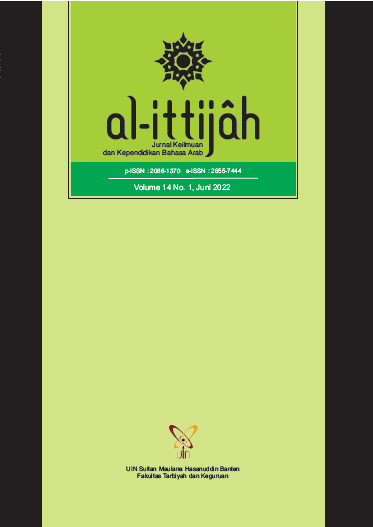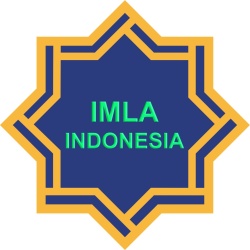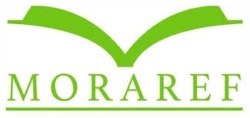Pre-Service Arabic Language Teachers’ Readiness in Digital Media Based on European Profiling Grid
 DOI:
DOI:
https://doi.org/10.32678/al-ittijah.v14i1.5239
 Abstract viewed : 158 times
|
Abstract viewed : 158 times
|  pdf downloaded : 228 times
pdf downloaded : 228 times
Keywords:
Digital Media; Pre-Service Arabic Teacher; European Profiling GridAbstract
This study measures the readiness of Pre-service Arabic teachers to digital media based on the European Profiling Grid (EPG). Using the descriptive qualitative method, this study took data from 57 students of the Arabic Education Study Program. The results describe 98% was in the first development stage which is: can download resources from websites. While the lowest readiness with a percentage of 16% is in the third stage with indicators: can design blended learning modules using a learning management system. Therefore, it can be concluded that Pre-service Arabic teachers have a high readiness to use and implement digital media in teaching the Arabic language. However, there needs to be an effort to increase their readiness to use and implement the Learning Management System in their teaching practice. In addition, the results of this study are expected to be useful for mapping the stages of readiness of Pre-service Arabic language teachers to digital media, so that Pre-service Arabic language teachers know their strengths and weaknesses in utilizing digital media in their teaching, and it can also motivate them to develop their potential especially in the use of the digital media.
Downloads
References
Bardakci, S. (2013). ICT integration in education: An investigation of different purposes, policies, practices, effects and criticisms (Unpublished PhD thesis). Ankara University Educational Sciences Institute, Ankara, Turkey.
Doering, A., Hughes, J., & Huffman, D. (2003). No TitlePreservice teachers: Are we thinking with technology? Journal of Computing in Teacher Education, 35(3), 342–361.
Krumsvik, R. (2008). Situated learning and teachers’ digital competence. Education & Information Technologies, 13(4), 279–290.
Ottestad, G. (2014). Professional Digital Competence in Teacher Education. Universitetsforlaget. Nordic Journal of Digital Literacy, 9, 243–249.
Rogantina, M. A. (2017). Peran Dan Fungsi Teknologi Dalam Peningkatan Kualitas Pembelajaran. Jurnal Ilmiah Research Sains 3, 1, 122–29.
Russell, M., Bebell, D., O’Dwyer, L., & O’Connor, K. (2003). Examining teacher technology use: Implications for preservice and inservice teacher preparation. Journal of Teacher Education, 54, 279–310.
Tondeur, J., Aesaert, K., van Braak, J., Pynoo, B., Freyman, N., & Erstadt, O. (2017). Developing a validated instrument to measure pre-service teachers’ ICT competencies: meeting the demands of the 21st-century. British Journal of Educational Technology, 48(2), 462–472.













